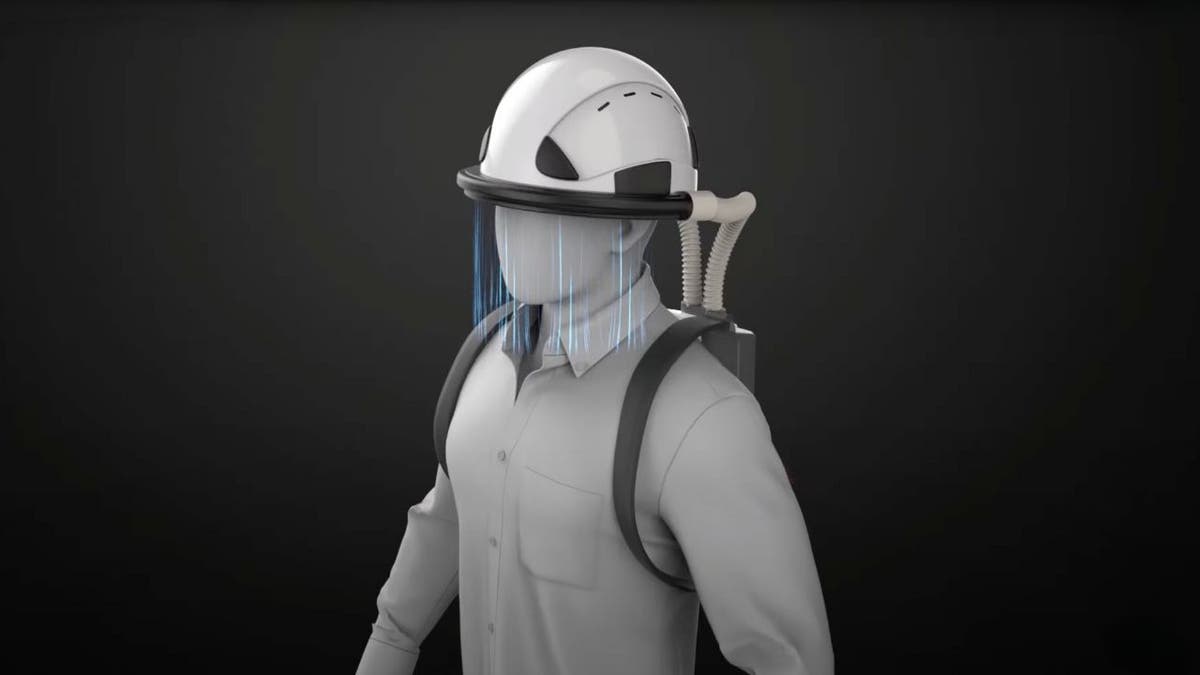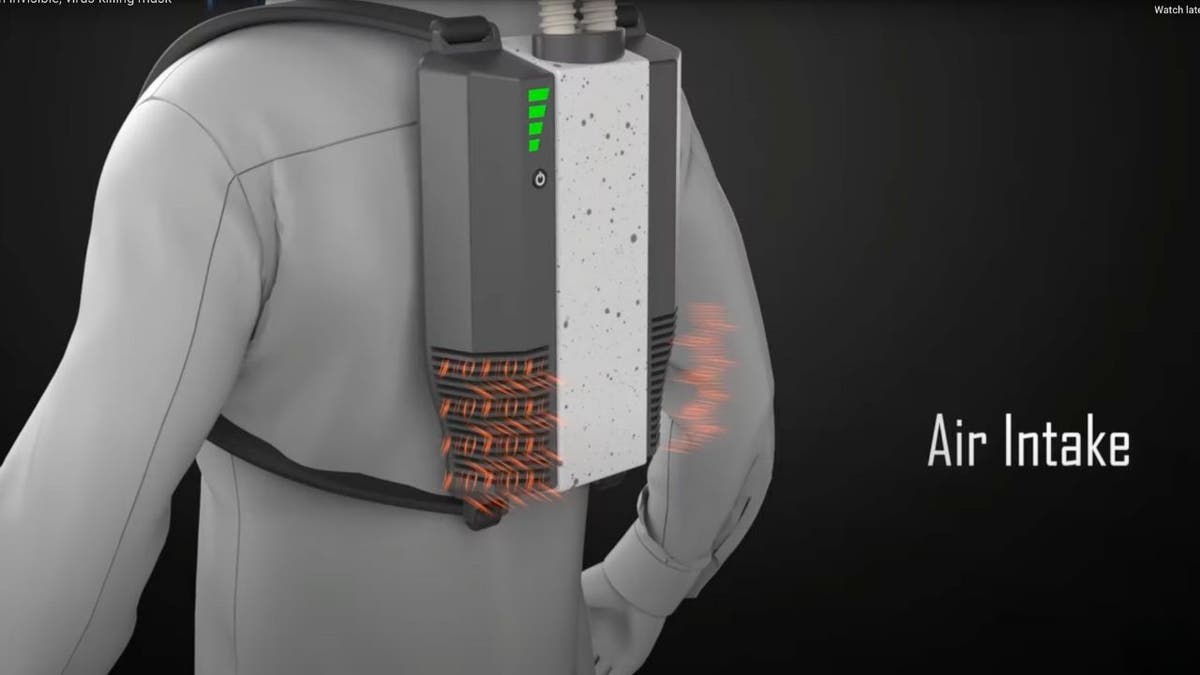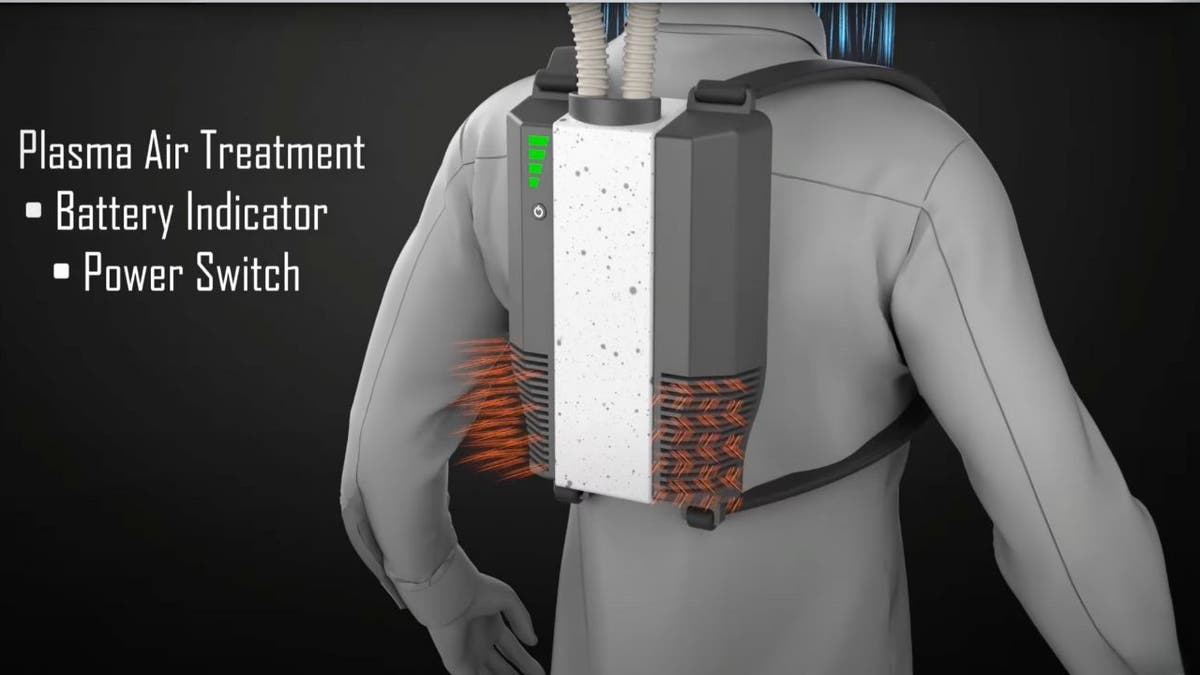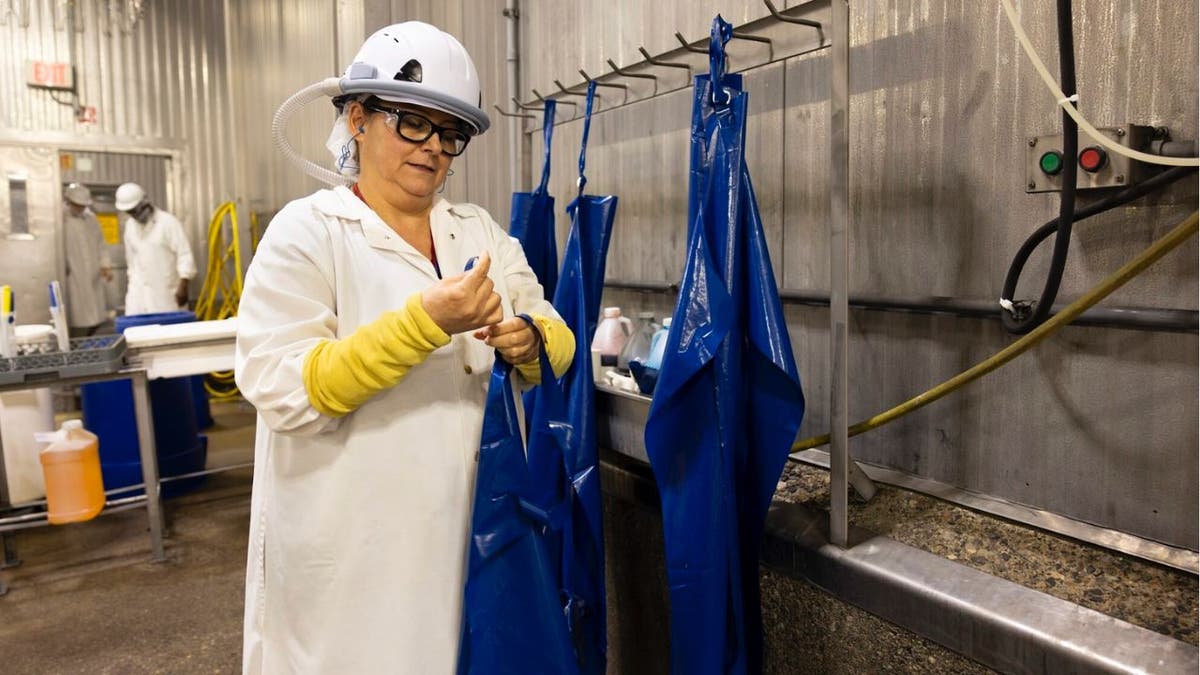'CyberGuy': A breath of fresh air
Kurt Knutsson takes a closer look at a new device that uses air nozzles and virus-killing tech to shield against airborne threats.
In an era where airborne health threats remain a constant concern, a groundbreaking innovation has emerged from the University of Michigan that could revolutionize how we protect ourselves from viruses and other harmful particles. Let's explore this development and its potential impact on worker safety and beyond.
GET SECURITY ALERTS, EXPERT TIPS - SIGN UP FOR KURT’S NEWSLETTER - THE CYBERGUY REPORT HERE

Worker Wearable Protection Device (University of Michigan) (Kurt "CyberGuy" Knutsson)
The ‘Worker Wearable Protection Device’
Imagine a device that shields you from airborne viruses without covering your face. That's exactly what the "Worker Wearable Protection Device" does. Created by a team led by associate professor Herek Clack at the University of Michigan, this ingenious gadget uses an invisible curtain of air to keep harmful particles at bay.

Worker Wearable Protection Device (University of Michigan) (Kurt "CyberGuy" Knutsson)
SKYROCKET TO A HEALTHIER LIFESTYLE WITH THIS GEAR IN 2024
How does the shield work?
The device consists of a hard hat equipped with a visor that houses downward-facing air nozzles. These nozzles create a curtain of air that curves around the wearer's face, effectively blocking 99.8% of aerosols, including viruses. But here's the interesting part: The air itself is pre-treated to kill any viruses present, pushing that protection level to nearly 100%.
HOW TO REMOVE YOUR PRIVATE DATA FROM THE INTERNET

Worker Wearable Protection Device (University of Michigan) (Kurt "CyberGuy" Knutsson)
5 BEST TELEMEDICINE APPS FOR VIRTUAL HEALTH CARE
The science behind the shield
The magic happens in a 10-pound backpack that houses the device's brain. This backpack contains several crucial components: a battery to power the system, electronics to control the operations, an air handling system to manage airflow, and a nonthermal plasma module. The nonthermal plasma module is the star of the show. It creates ionized gas at low temperatures, effectively killing airborne viruses before they reach the air curtain.

Worker Wearable Protection Device (University of Michigan) (Kurt "CyberGuy" Knutsson)
HOW GENERATIVE AI COULD CUT HEALTH CARE COSTS, DEVELOP NEW CANCER DRUGS
Real-world testing of the shield
The Worker Wearable Protection Device is currently being tested at Michigan Turkey Producers, a poultry-processing plant. Here, workers face constant risk of respiratory viruses from both their colleagues and the birds they handle. Previously, these workers relied on paper masks, which came with a host of problems. They found it difficult to communicate effectively, their safety goggles would often fog up, and the masks couldn't maintain a consistent facial seal throughout the workday. Moreover, workers had to remove their masks when eating or drinking, leaving them temporarily unprotected. The new device solves all these issues while providing superior protection.

Worker Wearable Protection Device (University of Michigan) (Kurt "CyberGuy" Knutsson)
Looking to the future of the shield
While the current model is designed for industrial settings, Taza Aya, the company commercializing the technology, has plans for a smaller, sleeker consumer version. CEO Alberto Elli expressed excitement about the initial results and anticipates launching the Worker Wearable in 2025.

Woman at Michigan Turkey Producers wearing Worker Wearable Protection Device (University of Michigan) (Kurt "CyberGuy" Knutsson)
Kurt's key takeaways
As we continue to face challenges from airborne pathogens, innovations like this give us hope for a future where we can work and interact safely without the limitations of traditional face masks. While there's still work to be done before this technology becomes widely available, the early results are promising. As we look forward to 2025 and beyond, the Worker Wearable Protection Device may well become a common sight in workplaces and public spaces, offering an invisible but powerful shield against airborne threats.
In what other industries or settings do you think this technology could be applied? Let us know by writing us at Cyberguy.com/Contact.
For more of my tech tips and security alerts, subscribe to my free CyberGuy Report Newsletter by heading to Cyberguy.com/Newsletter.
Ask Kurt a question or let us know what stories you'd like us to cover.
Follow Kurt on his social channels:
Answers to the most asked CyberGuy questions:
- What is the best way to protect your Mac, Windows, iPhone and Android devices from getting hacked?
- What is the best way to stay private, secure and anonymous while browsing the web?
- How can I get rid of robocalls with apps and data-removal services?
- How do I remove my private data from the internet?
Copyright 2024 CyberGuy.com. All rights reserved.





















